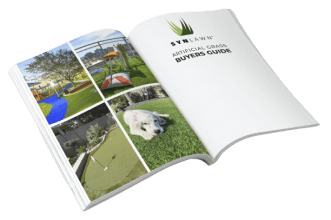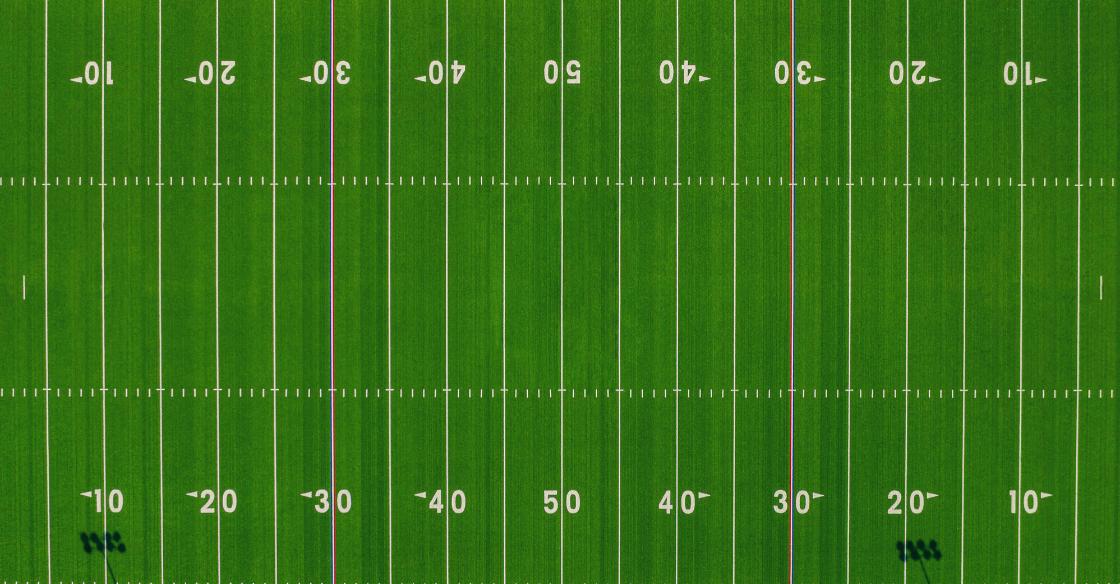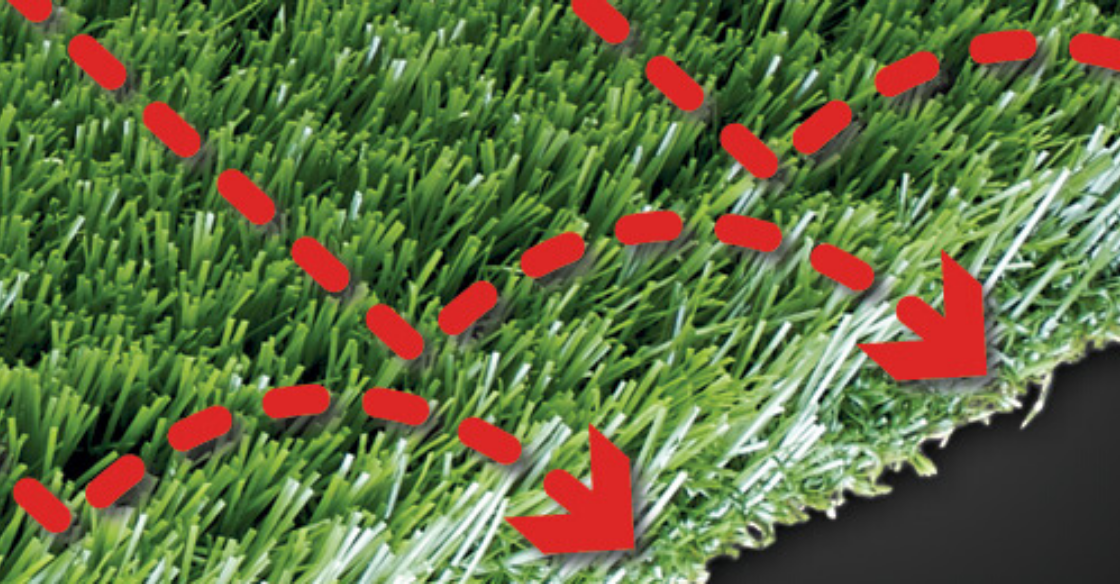Artificial turf has a number of benefits that have saved copious amounts of time and money for hundreds of thousands of property owners. The minimal upkeep required for artificial turf maintenance appeals to many pet owners in particular. Artificial turf for pets is resistant to discoloration from pet waste, eliminates mud, and makes cleaning up messes a breeze.
Although synthetic turf has gained significant popularity amongst pet owners, some are still skeptical as to whether or not artificial turf is safe for their furry friends. Because some artificial turf has the potential of containing harmful chemical compounds, risk of overheating, and adverse environmental impacts, many people inquire if artificial turf is safe for pets.
To be as concise as possible, the short answer is yes, artificial turf is safe. The long answer is that the extent to which it’s safe for your pet and the environment depends on the brand.
All artificial turf is produced by combining synthetic fibers to resemble blades of grass and placing an infill on the layer to keep it stable; however, the materials used to produce the turf vary from company to company. The materials used in the infill and blades are either petroleum-based or plant-based. While experts agree that neither of these choices has any severe health impacts, SYNLawn believes that biobased turf is both more environmentally responsible and safer for your pets’ health.
The Evolution of Artificial Turf
To discover if artificial turf is safe for your pet, you must first understand how the materials used in synthetic turf have evolved over time.
The prototype of artificial turf called “Chemgrass’ debuted in 1964 when an American biotech corporation called Monsanto used tightly curled nylon fiber that was woven into a foam backing to create a low-maintenance alternative to grass. The product gained public notoriety in 1966 when it was installed in the Houston Astrodome and promptly renamed “AstroTurf ”.
By the early 2000s, the turf industry was looking for a way to stabilize the synthetic blades to create a more durable surface. This resulted in the use of styrene-butadiene rubber, or “crumb rubber,” as an infill. The infill contained tiny black crumbs made from pulverized car tires that were poured between the artificial blades. The rubber infill gave the field more bounce and cushioned the impact for athletes, reducing serious injuries like concussions.
For the past two decades, crumb rubber infill has been dominantly used for sports fields, playground turf, artificial turf for pets, and residential lawns. Crumb rubber turf fields have had notable benefits for the environment including diverting millions of tires from landfills, eliminating the need for fertilizer and pesticides, and conserving thousands of gallons of water annually.
However, because crumb rubber is a petroleum-based polyethylene, in recent years people have become more skeptical of the risks that a tire-based product may have on their pets’ health which has led to extensive scientific testing.
Is Artificial Turf For Pets Safe According to the Experts?
In response to this public concern, four Connecticut state agencies, the University of Connecticut Health Center (UCHC), The Connecticut Agricultural Experiment Station (CAES), the Department of Public Health (DPH) and the Connecticut Department of Environmental Protection (DEP) conducted a two-year comprehensive evaluation of the health and environmental impacts associated with artificial turf fields containing crumb rubber infill.
The results of this study indicate that “in spite of worst-case assumptions, cancer risks were only slightly above de minimis levels for all scenarios evaluated.” In layman’s terms, this means that crumb rubber infill turf only increased the risk of cancer by a trivial amount. This amount is no higher than the health risks posed by ambient pollution sources and they are below target risks associated with many air toxics regulatory programs.
Based upon their findings, the State of Connecticut concluded that outdoor and indoor artificial turf fields including artificial turf for pets are NOT associated with elevated health risks for humans or animals from the inhalation of volatile or particle-bound chemicals from crumb rubber.
The SYNLawn Difference
In summary, crumb rubber is equally as harmful as our air so it doesn’t increase health risks for our pets. However, here at SYNLawn, we believe your furry friends deserve the safest of conditions and we think we can do even better than just matching the toxins in our air. That’s why we’ve gone the extra mile to ensure that our artificial turf is made of the highest quality plant-based materials that are safe for your pets’ health and the environment.
We’ve made our turf safer for your family, pets, and the environment than our competitors in the following ways:
- Replaced over 70% of the petroleum-based polyol of competitors’ turf with a plant-based polyol made using soybeans.
- SYNLawn’s exclusive EnviroLoc™ Backing System is an environmentally-friendly, multi-layer component system that “locks” in durable turf fibers, thereby extending the product’s life cycle so you won’t need to replace your artificial turf for pets as often.
- Scientifically proven, SYNLawn’s exclusive HeatBlock Technology lowers rising temperatures by reflecting sunlight and reducing heat build-up and thermal emissivity, which makes our turf safe and comfortable for pets. SYNLawn with HeatBlock Technology incorporates infrared reflective pigments that help dissipate heat build-up and reduce fiber emissivity by as much as 20% cooler than similar artificial turf products.
- SYNRenew™ synthetic turf combines soy-based EnviroLoc™ backing technology with polyethylene fibers made from sugarcane technology to produce a new and completely bio-based synthetic turf product.
- Because manufacturing 1 lb of petroleum-based polyethylene releases 5.5 lbs. of carbon dioxide into the atmosphere, we’ve opted for sugarcane and soybean technology to produce our synthetic fibers.
As a lifestyle brand, SYNLawn’s goal is to help educate consumers on why artificial grass is a great option to reduce your carbon footprint, as well as eliminate the use of harmful chemicals when it comes to landscaping applications.
So is artificial turf for pets safe? Ours is! While experts agree that all artificial turf is relatively safe for your health, we believe your home, family, pets, and our planet deserve the absolute best, not just the minimum. That’s why we’ve made it our priority to ensure our synthetic turf is safe for your pets’ health and the environment. If you’re interested in investing in the most sustainable artificial turf on the market, browse our products and contact us at 206-785-2897.



